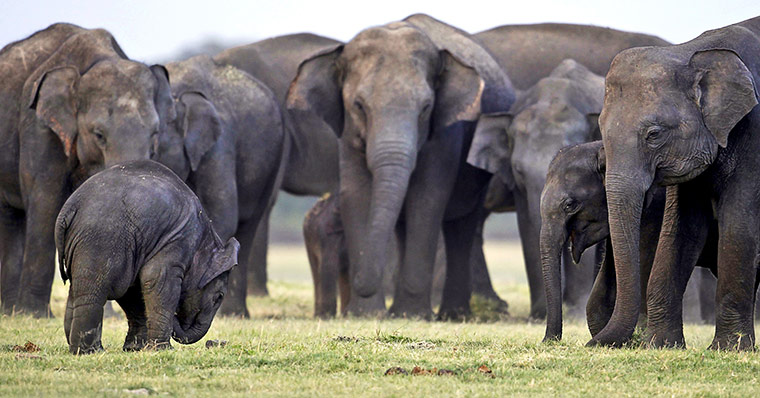TOP STORIES
SICK AND DEAD DEER REPORTED FROM EASTERN KANSAS
Late August through early October is a time when people occasionally see sick and dead deer and wonder what is happening. The disease most often associated with these losses is a virus called hemorrhagic disease (HD). It is caused by a virus, and it is transmitted to deer and other ruminant animals by biting midges. People and their pets are not affected by this virus, and the disease stops in the fall after cold weather kills the midges.
The Kansas Department of Wildlife, Parks and Tourism (KDWPT) is asking anyone who sees a sick or dead deer to contact local KDWPT staff and report where and how many deer are involved. So far this year, KDWPT has received reports from 12 counties in eastern Kansas, and most of these reports involve a single sick or dead deer. Samples have been submitted to the Southeastern Cooperative Wildlife Disease Study at the University of Georgia. Initial results from two cases confirmed that the virus involved in this year’s cases is epizootic hemorrhagic disease virus (EHDV), serotype 2. (A serotype is a distinct variation within a subspecies of the virus.)
ProMed Mail: Die-off, Wild Birds - Request for Information; Archive No. avian - 20110901.2674
The cause of the mass deaths of birds in lake Tagar, Minusinsk District of Krasnoyarsk, is to be investigated. On the shores of the lake, more than 100 wild ducks have been found dead. Sick birds were seen as well.
Specialists of Rosselkhoznadzor are investigating the event, putting the lake under a monitoring regime and collecting samples to determine the causes of illness and death of the birds.
This is not the 1st such incident at the lake. In September 2010, more than 500 birds died there.
Avian influenza H5N1 clade 2.3.2.1 [OIE Press Release]
OIE closely follows the evolution of avian influenza in domestic and wild birds around the world, and acknowledges the recent identification of an H5N1 virus described as clade 2.3.2.1.
Small genetic changes are known to routinely occur in influenza A viruses, including those that may affect humans or animals. The emergence of the H5N1 virus, such as clade 2.3.2.1 is one of such genetic mutations taking place as part of the natural evolution of the virus. This is not immediate cause for alert but, as with the emergence of any new strain, reinforces the need for sustained monitoring of viruses in animal populations so that changes in viruses circulating in the field are detected at an earliest stage and that most appropriate disease control strategies are chosen to best protect animal and public health.
OIE recommends keeping up with active surveillance in bird populations, encouraging national Veterinary Services to be prepared to quickly report and respond to unusual animal disease events that may represent more serious disease in animals or that may pose increased risk to humans.
31 Aug 2011
>>> FULL ARTICLE
Other Avian Influenza News
MP fears flying foxes could carry bird flu
Canada’s Wild Bird Survey for Avian Influenza Underway
OTHER WILDLIFE HEALTH RELATED NEWS
Photo courtesy of The Guardian's Week in Wildlife
 2 dolphins die after 13 beach themselves in Eastham (Eastham, Massachusetts, USA - Map It
2 dolphins die after 13 beach themselves in Eastham (Eastham, Massachusetts, USA - Map It  )
)- Fish Kills Surfacing In Eastern NC From Hurricane Irene (Tar Creek - Map It
 , Roanoke River - Map It
, Roanoke River - Map It  , Pasquotank River - Map It
, Pasquotank River - Map It  , North Carolina, USA)
, North Carolina, USA) - Blue-green algae outbreak closes Milford Lake (Kansas, USA)
- HRI:UNArts: One Health Initiative Unites Human and Veterinary Medicine
- Iberian lynx conservation and white rhino (Wildlife Veterinarian Blog)
- First West Nile Positive Bird Found in Artesia; Cerritos Numbers Grow(Artesia, California, USA - Map It
 )
) - More Dead Crows Test Positive for West Nile (London, Ontario, Canada)
- Eight more birds infected with West Nile virus found around Contra Costa (Contra Costa County, California, USA - Map It
 )
) - Bird found in Cambria tests positive for West Nile Virus (Cambria, California, USA - Map It
 )
)




